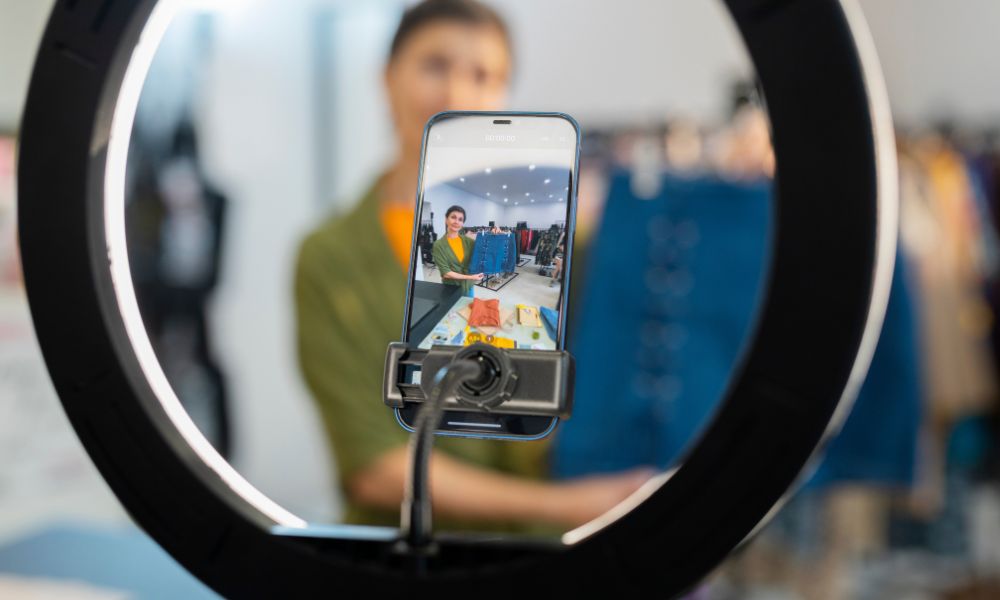If you’re exploring different types of influencer marketing campaigns, you’re likely looking for strategies that actually move the needle. Whether your goal is to grow brand awareness, increase conversions, or boost engagement, choosing the right campaign format is key. Each type offers a unique way to connect with potential customers through trusted voices in your niche.
In this guide, we’ll break down the most effective influencer marketing campaign types that brands use today. From product placements to social media takeovers, you’ll find practical insights to help you decide what works best for your next campaign.

What Are Influencer Marketing Campaigns?
Influencer marketing campaigns are collaborations where creators produce and share content that promotes a brand’s product, service, or message. This content typically lives on the influencer’s social media, blog, or video platform, reaching their existing audience in a way that feels more natural and relatable than traditional advertising.
Not all campaigns are the same, and that’s a good thing. Different formats serve different goals, some are ideal for driving sales, while others are better suited for generating buzz or building trust. Choosing the right type of influencer marketing campaign allows your brand to tailor its message, reach the right audience, and meet specific objectives more effectively.
For example:
- A sponsored post can introduce a new product quickly.
- A long-term ambassadorship nurtures deeper trust.
- A giveaway expands reach rapidly.
9 Types of Influencer Marketing Campaigns
Influencer marketing works best when the campaign format matches the brand’s goals. Whether you’re aiming for quick conversions, long-term brand loyalty, or increased visibility, there’s a structure that fits. Below are nine of the most widely used types of influencer marketing campaigns. Each offers a different way to connect with audiences, deliver value, and measure results.
For a broader look at what makes influencer campaigns successful today, check out our Influencer Marketing Strategies: 7 Data-Backed Tactics for 2025.
#1 Sponsored Posts & Social Media Collaborations
Sponsored posts are one of the most common types of influencer marketing campaigns. In this format, a brand pays an influencer to create and share content that features a product or service on platforms like Instagram, TikTok, YouTube, or X. The goal is to introduce the brand to the influencer’s audience in a way that feels natural and engaging.
Curious how creators grow their reach with brand deals? Explore our guide on What is a Social Media Influencer? Complete Guide & Tips.
These posts can take the form of images, videos, Stories, or Reels. The key to success is letting influencers maintain creative control, so the content aligns with their usual style and tone. This helps the message land more authentically and builds trust with their followers.
Why Sponsored Posts Work?
- Direct Promotion: Influencers introduce your product to their engaged followers.
- Trust & Credibility: Audiences value influencer recommendations over traditional ads.
- Measurable Results: Track engagement (likes, comments, shares) and conversions (clicks, sales).
When to Use Sponsored Posts?
- Launching a new product
- Boosting brand awareness
- Driving traffic to your website or store
#2 Giveaways & Contests
Giveaways and contests are high-energy campaigns that encourage audience participation while rapidly expanding your brand’s reach. In this campaign type, brands partner with influencers to offer a free product, service, or exclusive experience to followers, usually in exchange for likes, comments, shares, or tagging friends.
These campaigns create a sense of urgency and excitement, making them ideal for increasing reach and visibility in a short time. They’re also a great way to generate user interaction and attract new potential customers who may not have been familiar with your brand before.
To get the best results, keep the entry process simple and the prize relevant to both the influencer’s audience and your product offering.
Best Practices for Giveaways
✔ Set Clear Rules – Define entry requirements (e.g., “Follow us + tag 2 friends”).
✔ Partner with Multiple Influencers – Amplify reach by running the same giveaway across different creators.
✔ Use a High-Value Prize – Offer something desirable enough to motivate participation.
✔ Track Performance – Monitor engagement, new followers, and conversions from the campaign.
When to Use Giveaways & Contests?
- Quickly growing your social media following
- Generating buzz around a new product launch
- Increasing engagement during seasonal promotions
#3 Product Reviews & Unboxings
Product reviews and unboxings offer authentic, firsthand experiences that help potential customers make informed decisions. In these campaigns, influencers receive your product and create content that highlights their first impressions, key features, and overall experience.
This format works well when your product has strong visual appeal or unique benefits that are better demonstrated than explained. Unboxing videos, especially on platforms like YouTube and TikTok, allow influencers to showcase packaging, quality, and functionality, all while sharing genuine reactions.
Reviews are especially useful when targeting audiences in the consideration stage of the buying process. Seeing a trusted creator use and evaluate a product can help turn interest into action.
Best Practices for Review Campaigns
✔ Choose the Right Creator – Partner with influencers known for thorough, balanced reviews in your niche.
✔ Give Creative Freedom – Authenticity matters; avoid overly scripted content.
✔ Encourage Honest Feedback – Constructive criticism can actually boost credibility.
✔ Repurpose Content – Share standout clips as UGC on your website/social ads.
When to Use Review Campaigns?
- Launching complex or innovative products
- Building credibility for new brands
- Targeting consideration-stage shoppers

#4 Affiliate & Discount Code Campaigns
Affiliate and discount code campaigns are built for performance. In this setup, influencers promote your product along with a unique link or discount code that their followers can use at checkout. The influencer earns a commission or flat fee for each sale driven through their link, and your brand gains trackable conversions.
These campaigns are a smart choice when your focus is on measurable ROI. They also create a win-win scenario: followers get a special offer, influencers are rewarded for their impact, and your brand gains new customers.
Learn more about Influencer Marketing ROI: How to Measure & Maximize Returns.
To maximize success, work with influencers who have an engaged and loyal audience, and make sure the offer feels exclusive and time-sensitive.
Best Practices for Affiliate Campaigns
✔ Set Competitive Commission Rates – Typically 10-30% depending on product margin
✔ Provide Exclusive Discounts – “Influencer-only” codes create urgency (e.g., “MARIA20 for 20% off”)
✔ Supply Ready-Made Assets – Product images, talking points, and link formats
✔ Run Seasonal Boosts – Increase commissions during holidays for extra motivation
When to Use Affiliate Marketing?
- E-commerce brands with direct sales
- Products with strong visual appeal
- Retargeting warm leads
#5 Brand Ambassadorships
Brand ambassadorships are long-term partnerships where influencers consistently represent your brand over time. Instead of one-off posts, ambassadors regularly create content, engage with your product, and become a recognizable face tied to your brand.
If you’re building your first program, our guide on How to Hire Influencers: Complete Guide for Brands breaks down the steps from sourcing to activation.
This type of campaign is ideal for building brand loyalty and maintaining a strong presence within a specific community. It works especially well when the influencer genuinely uses and believes in your product, which leads to more authentic and consistent messaging.
Ambassadorships can include sponsored content, event appearances, affiliate promotions, and more, all aligned with your broader marketing goals.
Best Practices for Ambassador Programs
✔ Strategic Selection – Choose creators whose values and audience perfectly match your brand
✔ Clear Expectations – Define posting frequency, content types, and exclusivity terms
✔ Performance Bonuses – Incentivize top performers with increased commissions or perks
✔ Exclusive Access – Provide early product releases or behind-the-scenes experiences
When to Launch an Ambassador Program?
- Established brands with multiple products to showcase
- Niche markets where consistent visibility matters
- When seeking to build community around your brand
#6 Takeovers & Guest Content
Takeovers and guest content give influencers temporary control over your brand’s social media accounts or blog. During a takeover, an influencer might post Stories, go live, or share curated posts directly from your account. In guest content, they contribute a blog article, video, or newsletter feature.
These campaigns bring a fresh voice to your channels and help attract the influencer’s audience to your platforms. They’re especially useful for product launches, events, or brand awareness pushes where you want extra visibility and engagement.
To make the most of this format, choose creators whose tone and values match your brand, and set clear content guidelines in advance.
#7 UGC Campaigns (User-Generated Content)
User-generated content campaigns focus on collecting and showcasing content created by influencers or customers using your product. Instead of promoting to an audience, the goal here is to build a library of authentic visuals, testimonials, and everyday moments that reflect your brand in action.
Influencer-driven UGC can be repurposed across your own marketing channels, paid ads, landing pages, email campaigns, or product listings to boost credibility and relatability. These campaigns often involve clear creative briefs and usage rights agreements, so the content can be reused legally and effectively.
This type is especially valuable for brands that want to scale content production while keeping it real and customer-focused.
#8 Event Collaborations & Brand Experiences
Event collaborations bring influencers into real-world or virtual brand experiences, such as product launches, pop-ups, store openings, or industry events. The influencer documents the experience, shares behind-the-scenes content, and engages their audience in real-time.
These campaigns help build excitement and create authentic moments around your brand. They work especially well when targeting lifestyle, beauty, travel, or tech audiences who value immersive storytelling and visual content.
To ensure impact, choose influencers who are local to the event or have a strong connection to the niche, and plan for interactive content that keeps their followers involved throughout the experience.
Why Event Campaigns Stand Out?
- Multiplier Effect: 1 event can yield weeks of social content
- Deeper Relationships: Face-to-face interactions strengthen influencer bonds
- Exclusive Appeal: Creates “FOMO” (fear of missing out) among audiences
Top Event Collaboration Formats
- 1. Product Launch Events
Invite influencers to exclusive unveilings
Generate real-time social buzz with event hashtags
- 2. Masterclass/Workshop Series
Partner with expert creators for educational experiences
Example: A beauty brand hosting a makeup tutorial with top artists
- 3. Pop-Up Activations
Create Instagrammable moments at temporary locations
Encourage check-ins and location tags
- 4. VIP Brand Trips
Curated experiences for top-tier creators
Example: A travel brand hosting an influencer retreat

#9 Product Seeding (Non-paid Gifting)
Product seeding involves sending your product to influencers without a paid agreement, with the hope they’ll try it out and share their thoughts organically. While there’s no guaranteed content in return, this approach can lead to genuine endorsements, especially when the product fits the influencer’s style and interests.
This method works best with micro and mid-tier influencers who are more open to testing new products and sharing discoveries with their audience. It’s a low-cost way to start building relationships, gather feedback, and potentially generate valuable exposure.
To increase your chances of being featured, personalize your outreach, explain why the collaboration makes sense, and let the influencer know they’re under no obligation.
#10 Hashtag Challenges & Viral Campaigns
Hashtag challenges and viral campaigns are designed to encourage widespread participation and sharing. Often seen on platforms like TikTok and Instagram, these campaigns invite users, and sometimes other influencers, to create content around a branded hashtag, using a specific prompt, dance, sound, or theme.
The goal is to spark a chain reaction of engagement that boosts brand visibility and user interaction at scale. When done right, these campaigns create a sense of community and trend participation, while putting your product or message at the center of the conversation.
To succeed, the challenge needs to be easy to join, fun to create, and relevant to both your brand and your audience’s interests.
How to Choose the Right Influencer Campaign Type
Selecting the right influencer marketing campaign type starts with understanding your goals, knowing your audience, and working within your budget. Not every campaign will fit every situation, some are built for scale, while others focus on trust or storytelling. The best results often come from combining formats to support different stages of your customer journey.
1. Set Goals & Metrics
Before choosing a campaign type, define what success looks like. Are you aiming for brand awareness, deeper engagement, conversions, or fresh content you can repurpose? Each campaign type supports different metrics, use this to guide your approach.
- Awareness: Sponsored posts, hashtag challenges, takeovers
- Engagement: Giveaways, contests, event collaborations
- Conversions: Affiliate campaigns, discount codes, product reviews
- Content generation: UGC campaigns, product seeding
2. Select Campaign Mix
You don’t have to rely on a single format. A smart campaign often blends types to cover more ground. For example, combining affiliate promotions with unboxing content and UGC can generate traffic, boost conversions, and build a reusable content library. Just be sure the mix aligns with your audience and fits within your available resources.
3. Craft Briefs & Messaging
Once you’ve selected a campaign type, prepare detailed briefs. These should outline deliverables, deadlines, brand guidelines, and platform-specific requirements. Be clear about legal expectations too, such as including #ad disclosures or following GDPR and FTC rules for transparency.
4. Brief Influencers & Deploy
Share your campaign materials, visual assets, and clear CTAs with each influencer. Provide them with timelines, product details, and any codes or tracking links they’ll need. This helps reduce friction and ensures consistency across content. Tools to consider: UTM parameters, promo codes, affiliate links
5. Monitor & Optimize
Track campaign performance by type, and look at what drives the best ROI, engagement, and content volume. Use these insights to refine future campaigns. If a particular format performs well, consider scaling it across more influencers or channels.
Analysis Framework:
- By Format: Compare ROI across campaign types
- By Influencer Tier: Nano vs Macro performance
- By Platform: TikTok vs Instagram vs YouTube
Pro Tip: Tools like Hypefy.ai automate cross-campaign tracking to identify what truly drives results.

Final Thoughts: Build Smarter Campaigns with the Right Influencer Strategy
Understanding the different types of influencer marketing campaigns is the first step toward running more effective partnerships. Each format, whether it’s a simple sponsored post or a multi-channel ambassador program, offers unique strengths that can help your brand meet specific goals.
Start by defining what you want to achieve, then choose the campaign types that best support that outcome. Combine formats when needed, stay clear in your briefs, and always track performance. With the right mix of strategy, tools, and creative execution, influencer campaigns can become one of your most impactful growth channels.
If you’re ready to put these strategies into action, explore the Influencer Marketplace powered by AI to connect with top creators across industries. Or, if you prefer a guided approach, try Hypefy’s all-in-one platform for fully managed campaigns tailored to your brand’s needs.



